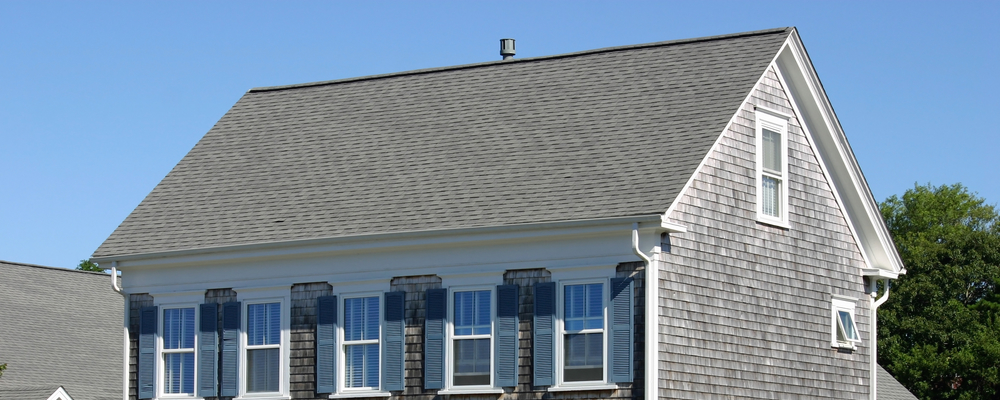Introduction to Gable Roofs

A gable or gabled roof has two sloping sides that meet together at a ridge. The two sloping sides that meet create end walls that have a triangular extension, called the gable. It can also be referred to as the A-shaped section of wall that occurs between the two intersecting sloping sides. It is important to note that these sides can be of different sizes depending on the property and larger residential buildings can sometimes have two or more gables to add more structure and depth.
History of Gable Roofs
Gable roofs date back to the early ancient Greek times where they were used in temples. The roofs have been architectural staples in northern Europe and America ever since. A building that faces the street with its gable is called a front-gabled building. On the other hand, a side-gabled building has its ridge parallel to the street and faces it with its cullis or gutter. In the medieval gothic period, front-gabled buildings were considered the norm in German city streets. In the Renaissance period, between the 14th and 17th century, side-gabled buildings became popular and were influenced by Italian architecture. Between the early 19th century and 1920, front-gabled houses became popular in America.
How are Gable Roofs Built?
A gable roof has two sections that slope down in opposite directions. These are placed in a way that the highest, horizontal edges come together to form the top point or roof ridge. The pitch and height of the gutters can vary depending on the size of the property. A ridge board runs along the highest point or peak of the roof and is parallel to the outside walls. The ridge board has the top of the common rafters nailed to it, these rafters slope in a downwards direction where they are nailed to the ceiling joists and the outside walls.
How long do Gable Roofs Last?
The life of a gable roof depends on how well it has been installed and the materials that have been used. On average, a properly installed gable roof can last 40 years and even longer provided that it has an adequate supporting framework.
Advantages of a Gable Roof
- Water Drainage:
The sloped design of a gable roof serves as a reliable water drainage system. The angled pitch means that water and snow can easily slide off the roof. This aspect of the roof minimizes the risk of leaks, which, in turn, ensures that the roof can remain damage-free and last longer.
- Easy to Build:
Gable roofs are simple and easy to build. They are far simpler in their construction as compared to other roof alternatives.
- Additional Space:
The sloped or triangular design of a gable roof provides more space for the homeowner. Homeowners can benefit from additional attic space as well as better ventilation in the property.
- An Affordable Option:
A gable roof is an affordable roofing option for those with a tight budget. Since a gabled roof is far simpler to build than other complex roofing alternatives, the overall costs of building and installing gable roofs are lower.
- Materials:
One has the option to use a variety of materials when it comes to the construction of a gable roof. Depending on the requirements, metal sheets, clay tiles and concrete tiles can all be used to construct the gable roof and complement the home.
Drawbacks of a Gable Roof:
- Prone to Wind Damage:
Gable roofs are not the most favorable option when it comes to hurricane regions. The gable roof design is more prone to wind damage since it is has a steeper pitch as compared to other roof types. The upper part of the roof can easily create a trap that can attract winds. Strong winds can exert a lot of pressure against the gable and can cause the roof to peel off.
- Proper Installation:
While gable roofs are fairly simple to install, they should be installed by a professional. A good gable roof can last long if it has been installed using the right materials and has been supported adequately with its framing. If the framing has not been installed properly, the roof is at a risk of collapsing.
Variations of Gable Roofs:
Box Gable Roofs:
Box gable roofs have a similar design to a classic gable roof. There are triangular extensions at each end of the house and the roof section is boxed at the end.
Front Gable Roofs:
A front gable roof has the front door of the house placed under the gable. Front-gabled homes are very popular where the front of the house faces the street.
Side Gable Roofs:
A side gable roof has the front door of the house placed under the side of the gable roof. The basic roof has two panels of equal sizes that are pitched at an angle.
Dutch Gable Roofs:
A Dutch gable roof design is a hybrid of a gable and a hip roof. The gable roof is placed on top of the hip roof, adding more space in the attic.
Cross Gable Roofs:
Cross gable roofs have two or more gable roof lines that intersect. The two ridges of the roof are made perpendicular to each other. Houses with cross gable roofs have a comparatively complex layout due to their structure.
Gable Roofs with Shed Roof Extensions:
You can change the look of a classic gable roof by adding a shed roof extension to the gable roof ridge. This design is popular amongst property owners that want to extend the space for better headroom.
Price of Gable Roofs
Generally, labor costs for framing a gable roof costs anywhere between $6 to $12 per square foot. For a 1,500 square foot roof, costs work out to be anywhere from $,9000 to $18,000 on average. Additional gables and dormers can bring up the costs.
